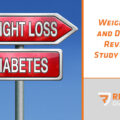Insulin, the most popular pharmaceutical treatment for type 2 diabetes, was once used only sparingly in diabetes treatment, but today makes lots of money for the manufacturers. Thanks to pharmaceutical marketing and a lack of time, many physicians prescribe insulin rather than nutritional counseling or lifestyle management.
Prior to the 1920s, the mainstay of Diabetes treatment was aimed at controlling glycosuria (glycosuria occurs when the blood glucose level exceeds about 160–180 mg/dL and is easily measured). These dietary recommendations consisted of “meats, poultry, game, fish, clear soups, gelatin, eggs, butter, olive oil, coffee, tea” and contained 5% carbohydrates, 20% protein, and 75% fat. This is analogous to the Low Carbohydrate Ketogenic Diet (LCKD) . These recommendations were dramatically different from current low-fat, high-carbohydrate recommendations for patients with diabetes. Also note that the feeding frequency rarely included breakfast, and manufactured snacks were not yet invented, resulting in 2 low-level glucose spikes, as opposed to today’s 5-6 spikes. Also, vegetable oils were not routinely available before the 1940s and 1950s. .
Exogenous insulin for the treatment of Diabetes was introduced in the 1920s, which began the switch to controlling diabetes through pharmaceutical management instead of lifestyle management, to the point that many type 2 Diabetic patients now consume excessive carbohydrates knowing they can chase it with insulin. Unfortunately, these patients already have a high insulin level, and the extra insulin only makes the insulin resistance worse. Additionally, the fat storage action of insulin, makes the metainflammation worse as well as the patient’s obesity. This is like a fat dog chasing its tail. The glucose is the tail, the mouth is the insulin, and the fat dog is the metabolic derangement.

Several recent studies have re-examined the effect of carbohydrate restriction on type 2 Diabetes and revalidated the safety and efficacy of the Low Carbohydrate Ketogenic Diet (LCKD). These studies confirmed that hemoglobin A1c improved to a greater degree over one year with a low-carbohydrate diet compared with a low-fat, calorie-restricted diet. Specifically, the participants had greater improvement in glycohemoglobin while on the low-carbohydrate diet than when on a eucaloric low-fat diet. Because LCKD can be very effective at lowering blood glucose, patients on diabetes medication who use this diet should be under close medical supervision or capable of adjusting their medication.
- Allen FM, Stillman E, Fitz R: Total dietary regulation in the treatment of diabetes: monograph No. 11. 1919, New York, The Rockefeller Institute for Medical Research Google Scholar
- Stern L, Iqbal N, Seshadri P, Chicano KL, Daily DA, McGrory J, Williams M, Gracely EJ, Samaha FF: The effects of low-carbohydrate versus conventional weight loss diets in severely obese adults: one-year follow-up of a randomized trial. Ann Intern Med. 2004, 140: 778-785.View Article Google Scholar
- Samaha FF, Iqbal N, Seshadri P, Chicano K, Daily D, McGrory J, Williams T, Williams M, Gracely EJ, Stern L: A low-carbohydrate as compared with a low-fat diet in severe obesity. N Engl J Med. 2003, 348: 2074-2081. 10.1056/NEJMoa022637.View Article Google Scholar
- Gannon MC, Nuttall FQ: Effect of a high-protein, low-carbohydrate diet on blood glucose control in people with type 2 diabetes. Diabetes. 2004, 53: 2375-2382.View Article Google Scholar
- Boden G, Sargrad K, Homko C, Mozzoli M, Stein TP: Effect of a low-carbohydrate diet on appetite, blood glucose levels, and insulin resistance in obese patients with type 2 diabetes. Ann Intern Med. 2005, 142: 403-411.View Article Google Scholar
- Nielsen JV, Jonsson E, Nilsson AK: Lasting improvement of hyperglycaemia and bodyweight: low-carbohydrate diet in type 2 diabetes. A brief report. Ups J Med Sci. 2005, 110: 179-183. Google Scholar
- Yancy WS, Vernon MC, Westman EC: Brief report: a pilot trial of a low-carbohydrate, ketogenic diet in patients with type II diabetes. Metabolic Syndrome and Related Disorders. 2003, 1: 239-244. 10.1089/154041903322716723.View Article Google Scholar
So, we know that patients with type 2 diabetes have the symptom of too much glucose, but their actual disease process is excessive Insulin, with the cells being insulin resistant; yet, we treat them with more insulin. This begs the question, why and who benefits? (This is in no way to be construed as suggesting insulin is bad; insulin is a lifesaving drug. It’s meant to suggest that patient therapy should be first geared to lifestyle changes, and insulin should be the rescue drug.)
Making lifestyle changes and counseling patients takes time and energy, which most healthcare providers lack. As the one of the key decision makers, physicians remain a primary focus of pharmaceutical company sales success. The pharmaceutical industry employs numerous marketing and promotional efforts to influence prescribing patterns, starting early in medical school, even in the preclinical years of study. These marketing strategies continue throughout a physicians’ career. Drug company marketing strategies include gifts and benefits ranging from low-cost gifts to expensive trips and grants, which leads to suboptimal prescribing practices and promotes more expensive medical treatment. One could postulate that most physicians are simply a marketing tool used by the pharmaceutical companies to get their products sold; they are an indirectly paid sales team.
Often, the pharmaceutical companies launder their education endeavors through patient advocacy groups that on the surface appear to be trusted authorities, such as The American Diabetes Association.
It is obvious that Big Pharma will not be likely to support studies that reduce the utilization of their products over non-compensable lifestyle changes. Evidence-based academic research is also unlikely to be performed by academicians who are funded by these same interests. The entire health delivery industry seems to be geared towards medicalization of treatment rather than lifestyle improvement, which would radically disrupt the status quo. Big Pharma is so prevalent in the academic world of policy and thought leaders that it is no longer considered a “conflict of interest” to recommend a pharmaceutical that compensated that policy or thought leader. It is now simply considered a “duality of interest.”






